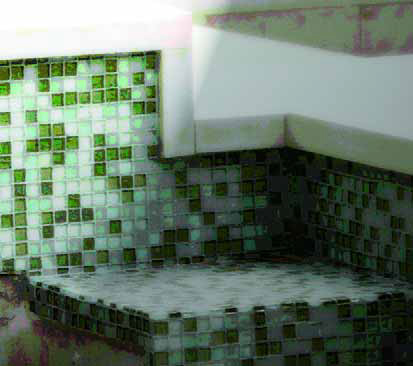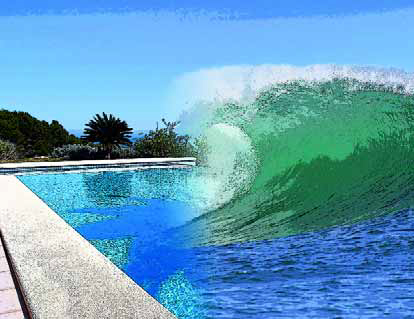ARTICLES
Advance Search
Aquatic Health
Aquatic Health, Fitness & Safety
Around the Internet
Aquatic Culture
Aquatic Technology
Artful Endeavors
Celebrity Corner
Life Aquatic
Must-See Watershapes
People with Cameras
Watershapes in the Headlines
Art/Architectural History
Book & Media Reviews
Commentaries, Interviews & Profiles
Concrete Science
Environment
Fountains
Geotechnical
Join the Dialogue
Landscape, Plants, Hardscape & Decks
Lighter Side
Ripples
Test Your Knowledge
The Aquatic Quiz
Other Waterfeatures (from birdbaths to lakes)
Outdoor Living, Fire Features, Amenities & Lighting
Plants
Ponds, Streams & Waterfalls
Pools & Spas
Professional Watershaping
Structures (Editor's Notes)
Travelogues & History
Water Chemistry
WaterShapes TV
WaterShapes World Blog
Web Links
Around the Internet
Aquatic Culture
Aquatic Technology
Artful Endeavors
Celebrity Corner
Life Aquatic
Must-See Watershapes
People with Cameras
Watershapes in the Headlines
With some details, seeing is believing. That's certainly the case with the one we'll consider in this column, where the images will do much of the work in defining a simple but elegant way of making a statement with any raised bond beam or wall. Yet again, it's testimonial to the good things that happen when watershapers know how to control materials and infuse their work with visual appeal. Most of the time when pool people build small or medium-size walls, they'll automatically be topped with some form of coping or capstone - anything from poured-in-place concrete or stone to brick or some pre-fabricated coping. Many of these walls are
It has always bothered me a bit that designers tend to restrict their thinking to just the physical area that fits the definition of their design specialty. Landscape designers stick to outdoor spaces and interior designers work on interior ones - and seldom the twain shall meet. To my way of thinking, that's shortsighted - which is just one of the reasons I'm both a landscape designer and an interior designer. I would argue that, when it is appropriate, professionals on both sides of the divide need to open their eyes and work with the visual flow through and between clients' interior and exterior spaces to achieve optimal design results. As landscape professionals, we already accept the importance of the "borrowed view," a wonderful term used to describe the deliberate capturing of other properties' assets by creating living or artificial frameworks that make them an artistic component of our clients' landscapes. If we are good at capturing neighboring views for our landscapes, I'd suggest it's a short step to make certain that we achieve the same sorts of wonderful views between the
As designers, we learn to evaluate landscapes and watershapes with critical eyes, deciding if we like a plant palette, for example, or if a hardscape makes sense or a watershape is sited properly in a yard. These critical skills are important, because clients hire us to pull all of those elements together and develop solutions that suit their needs as well as those of the setting. On rare occasions, a design/build project will stay on a straight course from initial concept to execution. Usually, however, I know that any ideas or biases I carry onto a job site will change and become more complex as I get to know my clients' wants, needs and desires. In other words, my critical skill - my designer's point of view - is consistently
Whether laid flat, stacked, loose or alone as an accent, stone is an integral part of most garden designs. Whether used in walls, paths or decks and no matter the type, it's a versatile material and knowing a bit about using it (and how to avoid problems) can be a tremendous help to any landshaper. These days, stone is quarried and can be moved to where you are from anyplace around the globe, provided your clients are ready to pick up the eye-popping cost of freight. But almost every area also has local sources of supply - a big advantage not only because you and your clients can easily see what you're getting, but also because local stone tends to fit better into naturalistic landscapes. Beyond the practicalities of
If you've been paying any attention to the media lately, you may have noticed that watershaping is "in" as a big-time topic for television, books, magazines, newspapers and other forms of mass communication. Never in all my years as part of this industry can I recall a time during which the subject of beautiful custom pools, spas, fountains, ponds, streams and interactive bodies of water has won so much attention. It seems as if our society has finally caught on to the power, beauty and excitement of the art form many of us
As the possibilities of learning more and creating unique gardens take hold, the give and take of landscape design can become a kind of addiction both for designer and client. I have experienced this phenomenon again and again, but only occasionally has it been as pronounced as in the case of the shade garden featured here: It's a wonderful example of how this constant drive to create new and beautiful plant combinations and visual planes can grip any landscape professional. A dedicated gardener, my client
I've always found it interesting that most of us have such a clear divide in our minds between technical and aesthetic thinking. Science tells us that our brains conduct analytical and logical thought processes on one side and creative and emotional thought processes on the other - and that certainly makes sense when you consider
Inspiration - literally, the breath of an idea - can come from any number of sources. While studying the work of 20th-century designer Beatrix Farrand at Dumbarton Oaks in Washington, D.C., for example, I spotted the planting combination of climbing pillar rose and Wisteria and thought her brilliant for having covered the woody Wisteria stems with rose flowers and
In discussing my role as a "forensic landscaper" a few months back, I expressed my disappointment in the quality of some of the work I was seeing in my local marketplace - and if the e-mail I've been receiving is any indicator, I am not alone in this experience. Indeed, questionable workmanship may be more prevalent that I ever could have imagined. As a result of this revelation, I will be using this space from time to time to demonstrate the fact that failure is often a better teacher than success and that, by exploring the nature and causes of failed projects, we can all come to a better understanding of the principles and practices that lead to good results. Before I begin, however, I'd like once again to salute
Labels are often deceiving: They don't always tell the whole story. In the green industry, for example, most of us identify ourselves as either designers or contractors, but after 18 years of landshaping, it's clear to me that a majority of us are really to varying degrees both designers and contractors. The very best designers understand






















